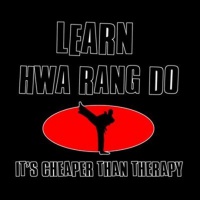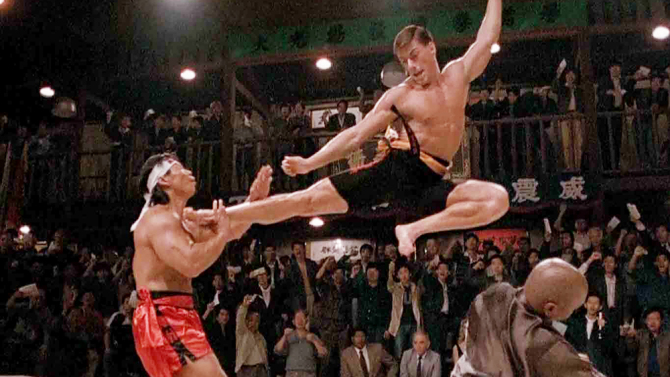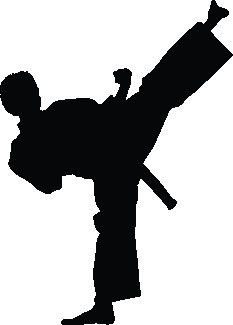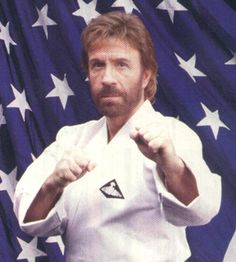The World of Kung-Fu 5.1: Circle of Iron
Circle of Iron: The Loyal Brotherhood.
“These are our homes. Our families. Our communities. They will not be destroyed and they will not be conquered.”—Amanda Choi, president of the American Taekwondo Association, 1969.
On the surface, the Circle of Iron is an American network of underground fighting arenas, in which martial artists try their skills against one another for glory. In fact, the Circle is the defensive alliance of Korean martial arts styles who organize these Circle of Iron tournaments. The Circle of Iron alliance was originally established to defend Korean styles against the threat of the Five Venoms, the Maniac Warrior Empire, and Wushu.1
The tournaments were subsequently introduced to defuse tensions between the Korean styles, and to give them an outlet for their competitiveness. The Korean styles had witnessed the madness of the Karate Wars and wanted to avoid suffering a similar fate. Over time, the bouts attracted more and more spectators of different styles and soon these stylists wanted to compete too. Today, Circle tournaments are open to fighters of every type, though the Korean styles still dominate. Tournament venues include: Battledrome, Bloodsport, Crazy Fists, Lotus Bowl, and Mortal Fury.
Within the Circle of Iron alliance, the largest and most powerful style factions are Taekwondo, Hapkido, and Hwa Rang Do, with Simgumdo, Tang Soo Do, and Taekkyeon also represented. Many teachers of Korean martial arts will not pass on Trained by a Master to those who do not intend to loyally serve the Circle. Other teachers regard loyalty to the Circle of Iron as optional and will teach anyone who has the money.
“Q: Why are Taekwondo fighters afraid to make a cup of coffee?
A: Too much ground fighting”—IFF joke.

Taekwondo has more fighters than any other Korean style, making it the most influential style in the Circle. They tend to regard themselves as the Circle’s natural leaders. However, use of Taewondo in the Infinite Fighting Federation has tarnished the styles’ image.
Hapkido is the second most numerous and powerful style, and many Hapkido practitioners feel that Hapkido is more disciplined and more fit to lead than Taekwondo. Hapkido was Jackie Chan’s first martial art, before he moved on to the study of Chinese Kung Fu. Hapkido have always blamed the loss of Chan on Wing Chun.

Hwa Rang Do is rumored to have telepathic powers. They don’t, and most intelligent and connect martial artists realize that, but Hwa Rang Do makes the most of its reputation and often cultivate an air of having secret wisdom and powers. As annoying as this behavior can be, their reputed powers can be useful in intimidating mooks, the ignorant, and the superstitious.
Tang Soo Do is best known for its most famous practitioner: Chuck Norris. Attitudes to Tang Soo Do fighters often depend on how much someone likes Chuck Norris. Some people really like Chuck and some really don’t.2
Q: “Why couldn’t the Tang Soo Do master kick Bill O’Reilly?”
A: “He was in a no spin zone.”—Circle of Iron joke.
Circle of Iron Relations
The Circle of Iron respect the Shaolin and Wing Chun factions of the Wulin, especially the Shaolin monks and other Buddhist monks and priests. They are warier of the Wudang, who are a stranger, less predictable, and more threatening. Despite their respect for Wulin, the Circle refuses to be drawn into the Kung Fu War. After all, the Circle exists to protect its own members in a dangerous world, not to put that dangerous world to rights by volunteering to fight other people’s wars.
The Wulin are upset that the Circle of Iron turns martial arts into sport’s entertainment. The Circle, in turn, is furious at the Infinite Fighting Federation for making such public displays of martial arts secrets. They are also angry at the IFF because IFF fighters get so much money and glory compared to fighters on the underground circuit.
Despite the Circle’s refusal to ally with the Wulin, they have increasingly found themselves aiding the Vigilantes. Circle of Iron events have become the nerve centers of the American Vigilante movement. Vigilantes gather at the fights to meet likeminded individuals, plot vigilantism, and unwind. Years of rubbing shoulders with Vigilantes has radicalized many in the Circle, who now support Vigilantism. Some Circle members even become Vigilantes themselves, and while the Circle hierarchy disapproves of this, they do not forbid it. The Circle has often officially provided Vigilante groups with material support, and sometimes even martial support. Increasingly, members of the Circle advocate that the organization give up on neutrality in the Kung Fu War and declare itself the world’s largest Vigilante group. This has created enormous tension within the Circle between the Vigilante sympathizers and conservatives who want to see the Circle of Iron focus on self-protection.
Circle of Iron as Heroes
Given the support for Vigilantism in the Circle of Iron and the number of Circle members who are actual Vigilantes, Circle of Iron members make natural heroes. For Vigilantes, it can be particularly useful to have a member who is on the inside of the Circle, able to access Circle information and resources. Even Circle fighters who don’t go Vigilante may find themselves ordered to cooperate with good guy factions in the interests of defending the Circle. The Circle understands that the bad guys threaten everyone, and that sometimes taking sides is the only way to survive.
Circle of Iron as Villains
Many members of the Circle of Iron don’t want the organization to be involved in the Kung Fu War, which they see as not their conflict. They want the Circle to remain true to its original mission, providing security through alliance and mutual support. These isolationists are not anti-militaristic nor do they disregard the threat of Wushu and other evil groups. However, they think the Circle should focus on self-defense and not throw its fighters away trying to defend others. On occasion, members of this faction have conspired to sour relations between the Circle and the Vigilantes, through lies, deception, sabotage, forgery, and even murder.
Footnotes
1. Practitioners of Korean styles in the US were coming to learn what Chinese martial artists had known for centuries: that the impossibility of staying clear of the Kung Fu War makes it essential to have allies. Consider Jo Wei’s 18th century poem, “Friends”.
No-one ever told you life was going to be this way.
It doesn’t matter what you do. Don’t matter what you say.
It doesn’t even matter if you bar the door. / There isn’t any place to hide in Kung Fu war.
Buddha Palm Kung Fu. Coming right at your face.
Devil’s Hand Kung Fu. Chi-block strikes and eye-rakes.
Eagle Claw Kung Fu. Buddha, here come the snakes.
Leopards in your kitchen trying to pounce on you.
Tigers in your bedroom. Must tigers be here too?
Leaping Dragons in your bathroom. It never ends.
Drunken masters in your pajamas. Friend, you need some friends!
Centipede Kung Fu. From the ceiling they fall.
Lizard Style Kung Fu. Climbing all ‘round your walls.
Scorpion Kung Fu. Striking up at your balls.
2. The ambivalence towards Chuck Norris is captured in the pop song “She Loves Tang Soo Do”, Oasis, late 1998.
We spoke of martial arts / When I saw her yesterday.
And she’s made up her mind. / She told me what to say.
She loves Tang Soo / Do. She says that it makes her bad.
She wants Tang Soo / Do like Chuck Norris has. Oo!
She bought some DVDs / And she’s been watching Chuck.
McQuade and Delta Force / And Walker in his truck.
She loves Tang Soo / Do. She’s going on rampage.
She wants Tang Soo / Do like Chuck in Silent Rage. Oo!
She loves Tang Soo Do, yeah, yeah / She loves Tang Soo Do, yeah, yeah
She loves Chuck so much / Though he could be her granddad.


